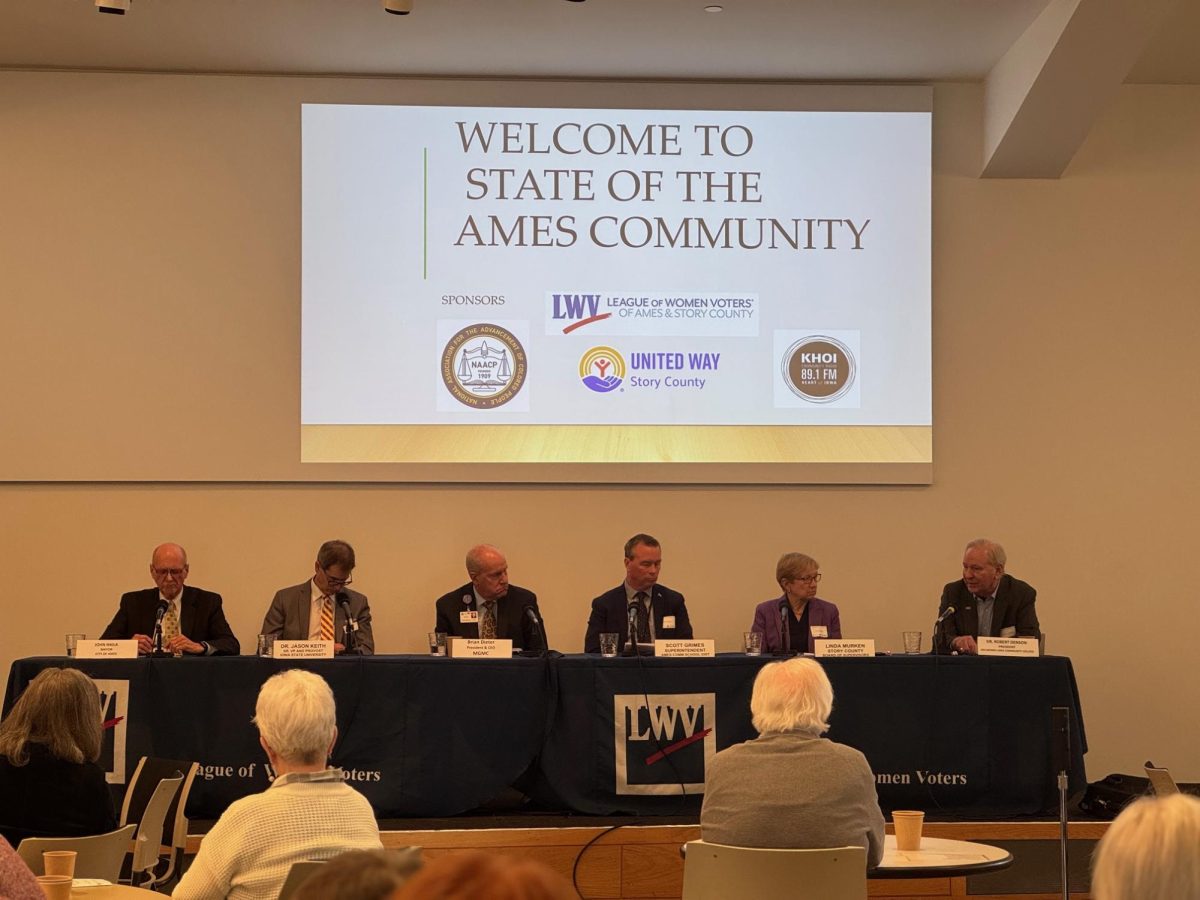A storm’s a brewin’
August 21, 2006
From small tornados hitting Ames to national disasters caused by hurricanes, weather is one of the few things we cannot control in this world, but it piques people’s interest.
will host an exhibit that will satisfy people’s need to see severe weather in action. Dan Gilbert, an ISU alumnus who now works with Weather Modification in North Dakota, said people care so much about weather because it is such a part of everyday life.
“It affects so many parts of our lives,” he said. “Agricultural areas need to know when to harvest; people who live in the city need to know whether to put fertilizer on their grass. It also affects our moods.”
Besides knowing what is coming the next day and the near future, out of the ordinary weather attracts the attention of many, including Gilbert, whose interest in weather was brought out by a childhood interest and fright of tornadoes.
“Severe weather puts people on the edge. At home my cat would jump on my mom’s head during tornadoes,” he said.
FASTTRAK
Notable weather events in Iowa
Summer 1977
>> Drought hurts crops.
December 26th 1991
>> Ice Storm damages property across Iowa.
July 9th 1993
>> Flood devastates Iowans and leaves many without water for days.
September 8th 2005
>> Tornados plow through ISU campus causing loss of trees, injury and other damages.
April 13th 2006
>>Tornados hit Iowa City including a sorority house and church.
When a tornado comes through town, many follow the directions of the National Weather Service, yet others want to get as close as possible.
“It’s very dangerous,” Gilbert said of untrained people chasing storms. “You’d be surprised. Most get injured from being struck by a car while on the side of the road or driving into a ditch, not from the storm.”
Safety is a huge issue in any kind of severe weather, from extreme heat to hurricanes. Spenser Pearson, sophomore in mechanical engineering, knows this well. He was nearly hit by a tree limb last fall after severe storms crashed down in the old Richardson Court area.
“I heard cracking and then the limb fell right next to me – it scared the crap out of me,” he said.
The tornado that touched down on campus last fall was an abnormal occurrence, said Mike Chen, professor of meteorology
“[Tornados] don’t occur as much in the city,” he said. “It was very, very unusual to touch down on campus.”
Chen, an ISU employee since 1978, has seen his share of severe weather at Iowa State.
His office, located in the Agronomy Building, was struck by a limb during the tornado last fall.
He said he also experienced the wrath of the flood of 1993. He returned from St. Petersburg, FLA. only to be greeted by a flooded city.
“It took about an hour to find a way into campus,” he said, describing the flooded streets.
Regular flooding, Chen said, occurs and disperses in a matter of days, sometimes less.
Predicting any sort of weather is very difficult for meteorologists and many refer to their experience with weather – not just facts.
Chen said floods last a short time, but droughts can be months long. He said it is easier to predict when a flood will occur.
Although weather can change daily activity and cause detours, students are educated on what to do in emergency situations, he said.
“During a tornado, go to a strong building – like Curtiss or Beardshear. It only takes 30 seconds to run to a building,” he said. “Students learned this in middle school and high school. I think they know what to do.”
OBSESSED: Images Of Weather, will run until March 18 at the Brunnier Art Museum.
Other resources:
National Severe Storms Laboratory Photo Album
Safety Tips
>> TORNADOS
Find a centralized room in the basement of the building you’re in.
>> LIGHTNING
If you’re close enough to hear it, you’re close
enough to get struck by it. The National Weather Service suggests, “When thunder roars, go indoors.”






